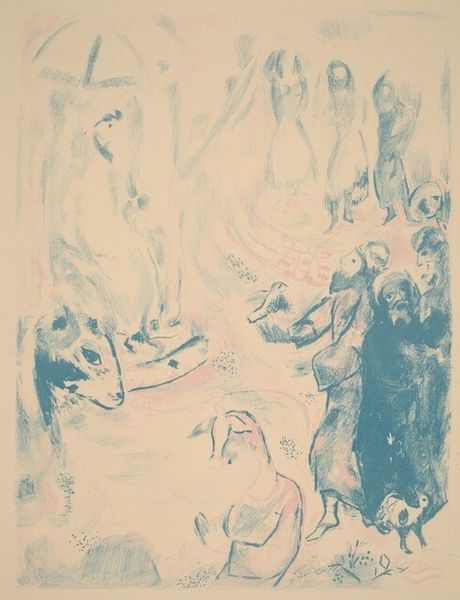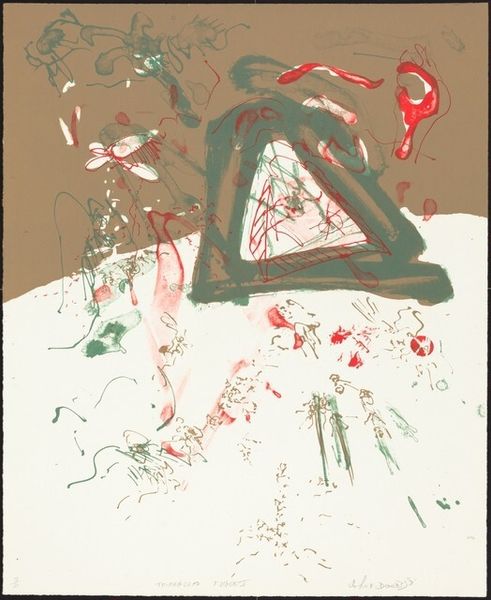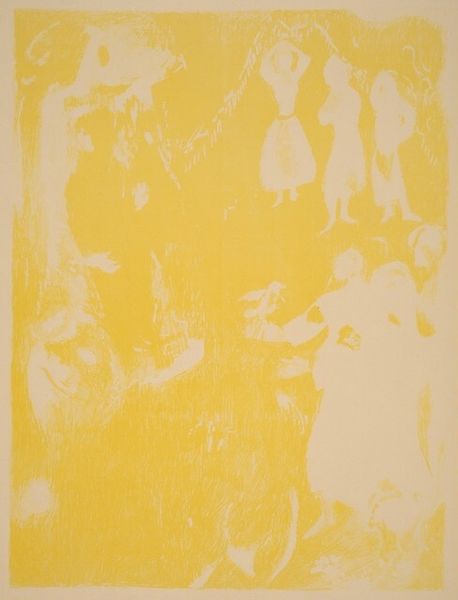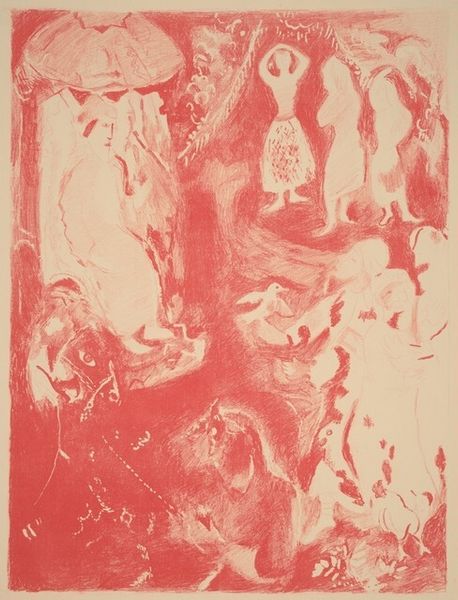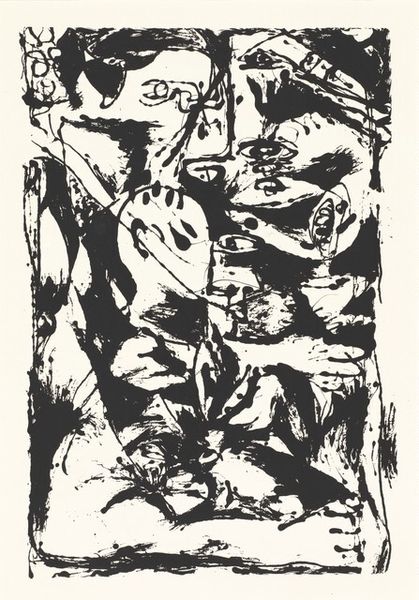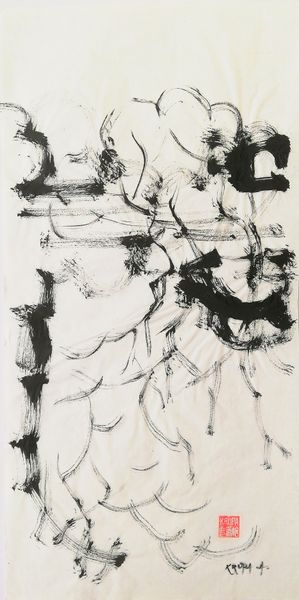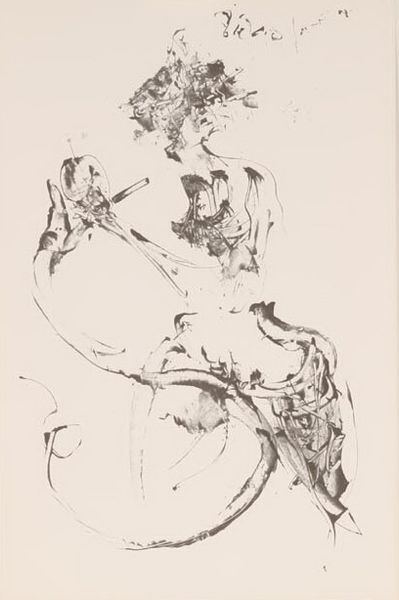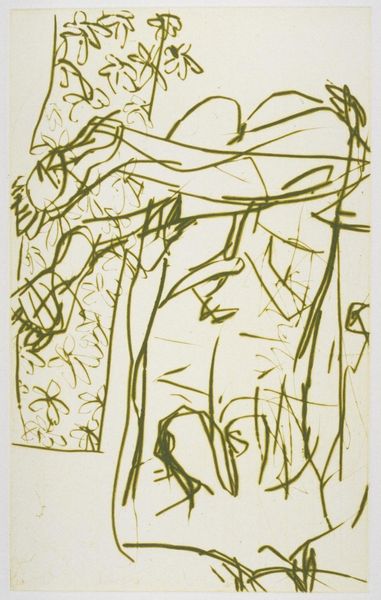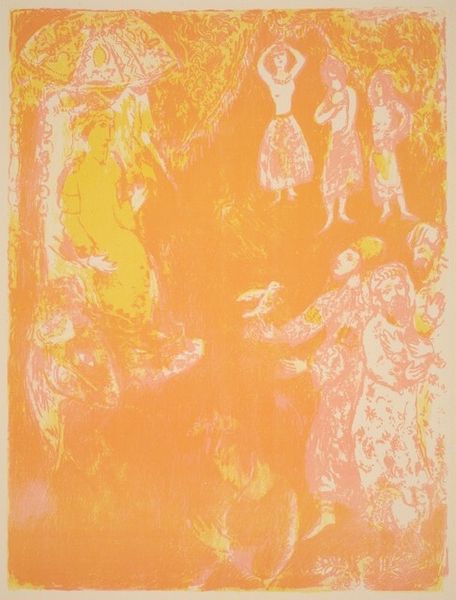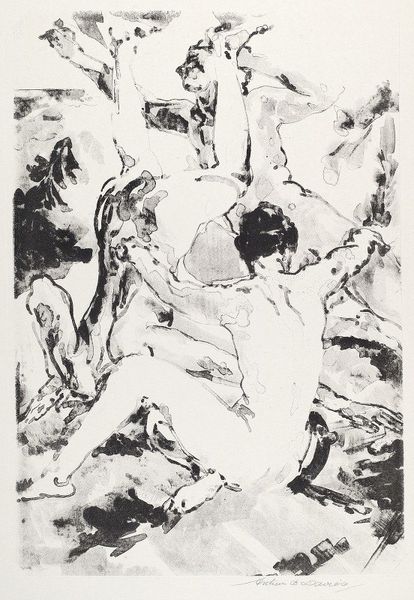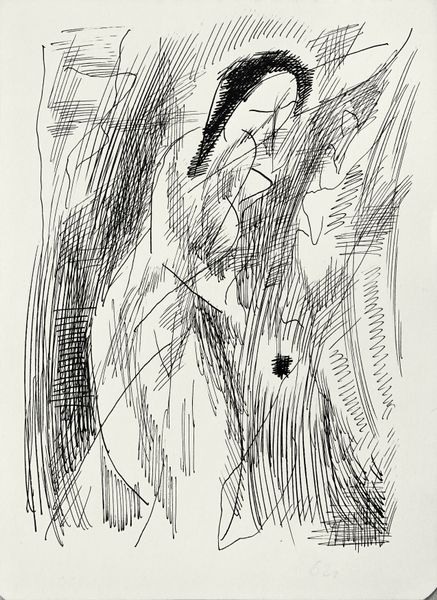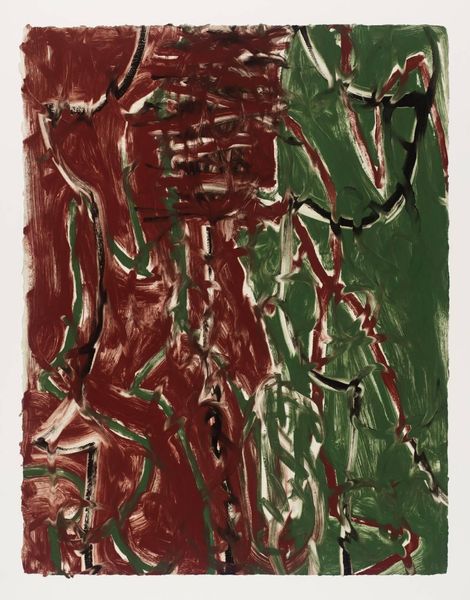
drawing, print, etching
#
drawing
#
narrative-art
# print
#
etching
#
pencil sketch
#
figuration
#
watercolor
Copyright: National Gallery of Art: CC0 1.0
Curator: Marc Chagall's "The Tale of the Ebony Horse," created between 1945 and 1946, offers a fascinating case study in narrative art. The etching and print work together with, what seems to me, is almost an ethereal aesthetic here. Editor: Ethereal is the word! It feels like a dream half-remembered, all in this pale, spectral green. The figures seem to float, not quite tethered to reality. It almost hums with a kind of unspoken story, you know? Curator: Exactly! And consider the process. Chagall, primarily a painter, uses printmaking to retell, not illustrate, narratives. There is so much history steeped in how artists approached reproductive techniques during times of technological advancement and social change. Editor: I’m particularly drawn to the, well, almost childlike quality of the figures. There's a lightness, a whimsical touch even, that cuts through the intensity you often find in narrative art focused on historical tales. Like he’s trying to remind us not to take it all too seriously? Curator: Or maybe he’s reminding us of the story’s accessibility. This isn’t just history; it's a tale passed down. Note how he doesn't emphasize refined skill or precision. This speaks to an understanding of labor in artistic creation – democratizing the artwork by showcasing accessibility in how we receive messages in our lives. Editor: That’s a good point. And the figures aren’t distinct; they sort of bleed into each other, creating this sense of interconnectedness. It’s less about the individual and more about the collective, a shared experience? It looks like something I’d see sketched onto my eyelids just before I go to sleep. Curator: I agree, and the monochromatic green palette is strategic. This isn't just a formal choice, but also a question: what impact does restricting an element of traditional visual engagement change the social experience of art. Editor: I leave this with an added note. You leave understanding what you're seeing, but still scratching your head and with your imagination fully aflame. The narrative opens its arms and envelops you with open palms! Curator: Beautifully put, I’d like to thank you, one last time, for opening us up to a way of thinking that questions tradition itself in ways that engage, not discourage viewers, through a medium steeped in labor.
Comments
No comments
Be the first to comment and join the conversation on the ultimate creative platform.
